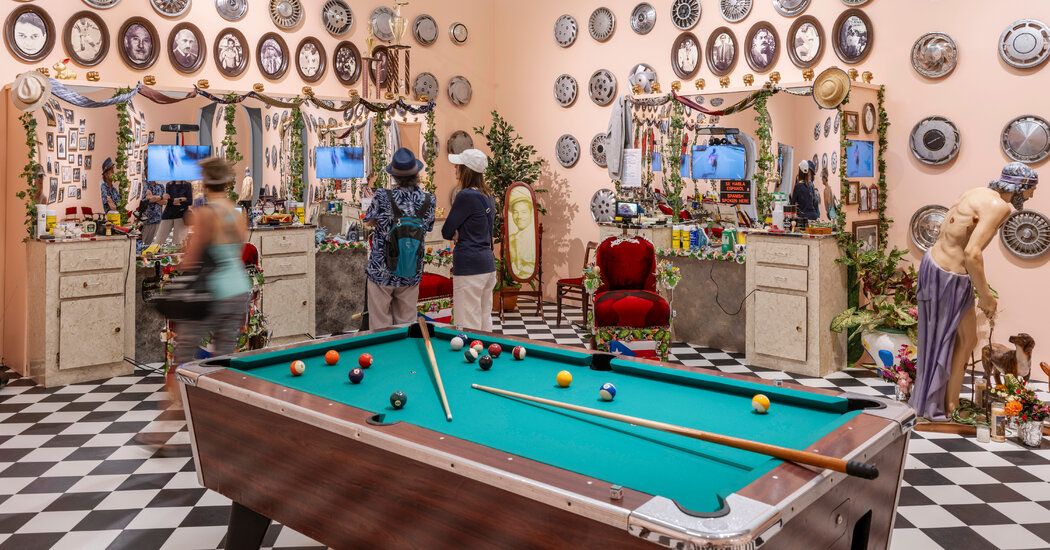The Artist’s Wounded Heart
During this time, he also associated with a cluster of experimental artists, several of them Puerto Rican immigrants, and he began making art of his own. Among other things, he designed sets and props for performers, including the choreographer and dancer Merián Soto, who would become his wife. Some of these props, saturated in Caribbean popular culture, took on a sculptural life of their own. Galleries invited him to show. Grants and residencies came his way.
His growing reputation, though, was largely confined to Latino institutions, segregated from the mainstream art world. This changed when the Whitney Museum of American Art commissioned him to create a big installation for its 1993 Biennial. That notoriously “political” show brought on a critical furor, and his piece, which is the earliest entry in the New Museum’s survey, caused a stir.
You can still see why. Titled “Scene of the Crime (Whose Crime?),” it’s basically a stage or film set, roped off with strips of caution tape and showing the chaotic aftermath of a murder. In the center of what appears to be a city apartment, a female body lies under a bloodied sheet. Judging by the object-packed décor, the occupants are Puerto Rican. And among the carefully chosen items are dozens of videotapes of popular Hollywood films — “Fort Apache” is one — promoting the stereotype of Latinos as inherently violent. The real crime of the title, as he sees it, is the one of racial and ethnic assassination committed by the American mass media.
Source: The New York Times


